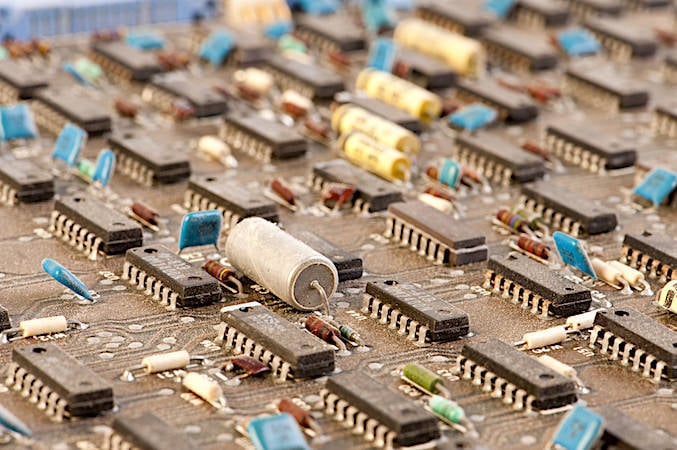Linus Torvalds Suggests The 80486 Architecture Belongs In A Museum, Not The Linux Kernel

Linux boss Linus Torvalds has contemplated ending support for the i486 processor architecture in the Linux kernel.
The ancient architecture was up for discussion last week in a thread titled "multi-gen LRU: support page table walks" that considered how the kernel can better handle least-recently-used (LRU) lists – a means of tracking memory pages.
As Torvalds surveyed contributors' code, he appears to have been frustrated by the need to include workarounds that cater to older CPUs. He therefore suggested ending support for old kit could be an easier way to solve memory matters.
"We got rid of i386 support back in 2012. Maybe it's time to get rid of i486 support in 2022?" he wrote.
Deeper into the thread, he returned to the topic with the following observations:
That position seems to be fueled by a little irritation, as even deeper in the thread Torvalds commented "the kind of work needed to keep i486 alive is the kind of maintenance burden we simply shouldn't have – no developer actually cares (correctly), nobody really tests that situation (also correctly – it's old and irrelevant hardware), but it also means that code just randomly doesn't actually work."
He may well have a point: the i486 architecture debuted in 1989 and was succeeded by Intel's Pentium in 1993.
Intel washed its hands of the '486 in 2007 and today its famously detailed Ark product database contains no mention of the processor family.
Anyone still running the devices has long since resigned themselves to doing so without support, the chance of acquiring new kit, or software developers giving the platform a second thought.
- Don't say Pentium or Celeron anymore, it's just Processor now, says Intel
- Linux Foundation celebrates 30 years of Torvalds' kernel with a dry T-shirt contest
- Linus Torvalds to kernel devs: Grow up and stop pulling all-nighters just before deadline
- Linus Torvalds's faulty memory (RAM, not wetware) slows kernel development
Yet The Register knows of one potentially very influential person who could conceivably weigh in to keep the venerable 80486 alive: Intel CEO Pat Gelsinger, who led development of the tech and has often said within your correspondent's earshot that he was told to make sure it excelled at running AI workloads.
At 100MHz, on a single core, with a 32-bit address space and a whole 16 kilobytes of cache.
Suffice to say the '486 is almost never mentioned when the history of AI is recounted.
And it appears the processor will also soon pass from Linux history to Linux legend. ®
Taking Flight: Volocopter's Quest To Revolutionize Urban Mobility Gains Momentum
Volocopter, a pioneering company in the field of urban air mobility, is on a mission to transform how people move around... Read more
OnlyFans Under The Microscope: Addressing Concerns Over Child Safety
Concerns Over Child SafetyOnlyFans' ResponseRegulatory ActionsCollaborative EffortsFuture DirectionsConclusion Read more
The AI Arms Race: Big Tech's Bid For Dominance In Artificial Intelligence
In the rapidly evolving landscape of technology, the race for dominance in artificial intelligence (AI) has intensified ... Read more
Decoding The Impact Of OpenAI's Sora Video Model On Industries And Jobs
In the realm of artificial intelligence, OpenAI's Sora video model stands out as a groundbreaking innovation, promising ... Read more
Apple Poaches Top Talent From Google To Strengthen AI Team
As artificial intelligence (AI) continues to shape the future of technology, companies are intensifying their efforts to... Read more
Meta's Bold Move: How Chatbots Are Reshaping The Tech Landscape
In a strategic pivot that has sent ripples across the tech industry, Meta has embarked on a bold journey into the realm ... Read more

